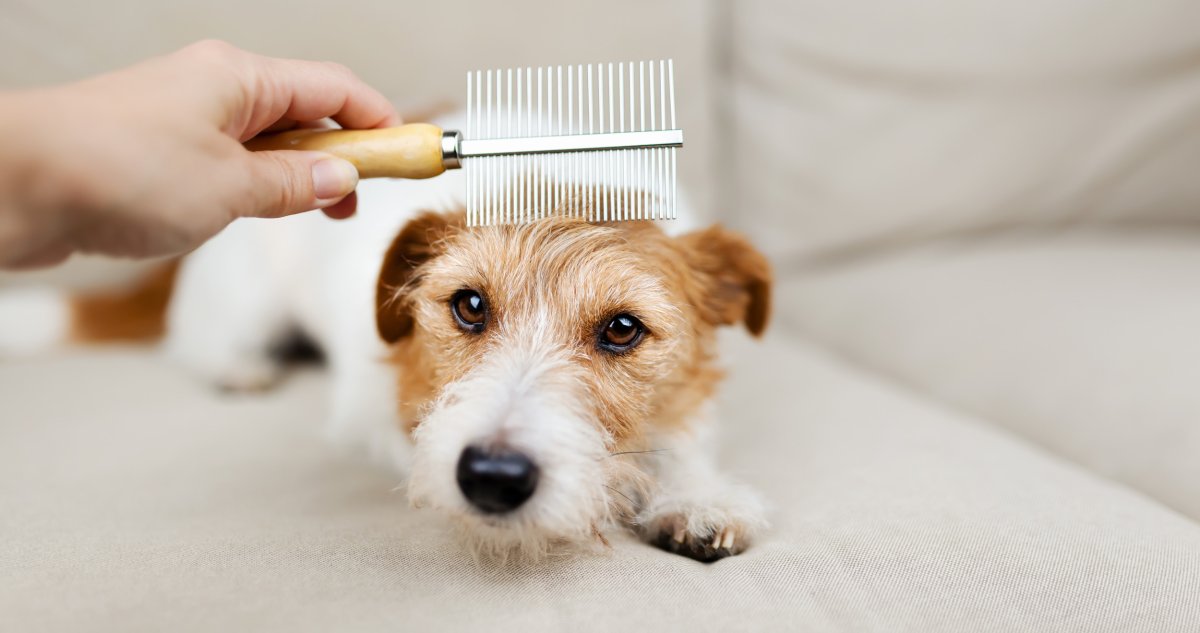The flea treatments you give your cat or dog may be poisoning the rivers—and it's getting there via your drains.
Flea medicines such as fipronil and imidacloprid are parasiticides that kill off the pesky critters plaguing your pet with itchiness. However, they end up in wastewater in large quantities, according to a new paper in the journal Science of The Total Environment.
These chemicals end up in the wastewater largely after being washed down the drain, especially after bathing a dog or cat, washing hands after applying the treatment, or washing bedding onto which the treatment was transferred.

"These pathways account for an estimated 20–40 percent of measured wastewater pollution," the researchers—hailing from the University of Sussex, Imperial College London, the University of Neuchâtel and Chipping Norton Veterinary Hospital—wrote in the paper.
Millions of cats and dogs receive flea treatments every year, with the chemicals remaining on the animals' skin for up to a month, poisoning the fleas living on their body.
In the U.K., 99 percent of river water samples taken by the Environment Agency were found to contain fipronil, with 66 percent containing imidacloprid. It was unclear how these chemicals made their way into river water in such large quantities, as in 2018 both were banned for outdoor agricultural use due to their effects on non-target insect life.
Both imidacloprid and fipronil are broad-spectrum insecticides, meaning they can kill a wide range of insect species, including beneficial ones such as pollinators (including bees and butterflies) and predatory insects like ladybugs and lacewings, as well as soil-dwelling organisms such as earthworms.
They are also both water-soluble, which means they can easily leach into soil and contaminate groundwater, or be washed into surface water bodies like rivers and lakes. This contamination can persist for extended periods, posing risks to aquatic organisms such as fish, amphibians, and aquatic invertebrates.
Now, however, new research shows that one of the major routes these chemicals take to get into rivers is via the drain from homes.
In the paper, researchers describe how they tested the levels of these chemicals in the wastewater that comes from bathing pets, washing bedding, and owners washing their hands after applying the anti-flea treatments.
"We treated dogs with these chemicals and measured how much came off when dogs were bathed or stroked. We found that bathing dogs, washing bedding and owners washing hands were all significant sources of river pollution, sufficient to account for much of the pollution found in rivers," paper author Dave Goulson, a professor of biology at the U.K.'s University of Sussex, wrote in a Conversation article about the new paper. "There were multiple likely additional pathways for these chemicals to end up going down the drain."
The paper describes how both chemicals were found in 100 percent of wash-off samples, with bathing the pet washing off the highest levels of the anti-flea treatments per event.
"Modeled to account for the frequency of emitting activities, owner handwashing was identified as the largest source of [down the drain] emissions from the population overall, with handwash emissions occurring for at least 28 days following product application and an estimated 4.9 percent of imidacloprid and 3.1 percent of fipronil applied in dog spot-ons passing down-the-drain via this route," the researchers wrote in the paper.
"The normalized daily per capita emissions for all routes combined were 8.7 μg/person/day for imidacloprid and 2.1 μg/person/day for fipronil, equivalent to 20–40 percent of the daily per capita load in wastewater."

Goulson suggests that owners should avoid using flea treatments as a preventative measure, and only use them when an infestation is present, as this will greatly reduce their usage. In the case of the animal having fleas, the use of combs and regular hot washing of their bedding is also suggested to help remove the fleas and larvae.
"Pesticides, including parasiticides, can have a legitimate and important role in pest and disease control, but the current approach to parasite control in pets is neither responsible nor sustainable. To achieve a healthier and more environmentally sound strategy, pesticides should only be used on pets with caution and for specific, targeted reason," Goulson wrote.
Do you have a tip on a science story that Newsweek should be covering? Do you have a question about flea treatments? Let us know via science@newsweek.com.
Uncommon Knowledge
Newsweek is committed to challenging conventional wisdom and finding connections in the search for common ground.
Newsweek is committed to challenging conventional wisdom and finding connections in the search for common ground.
About the writer
Jess Thomson is a Newsweek Science Reporter based in London UK. Her focus is reporting on science, technology and healthcare. ... Read more
To read how Newsweek uses AI as a newsroom tool, Click here.








